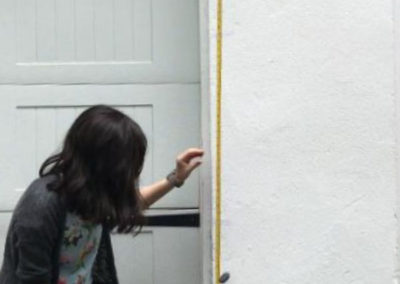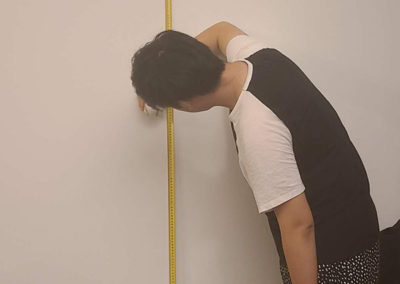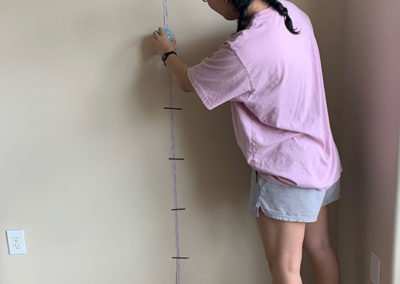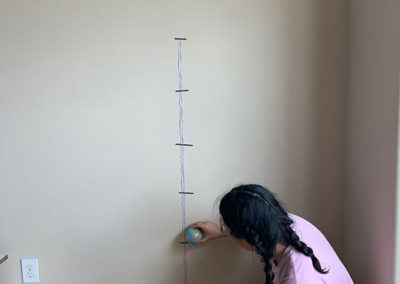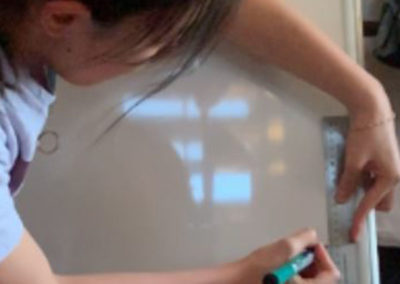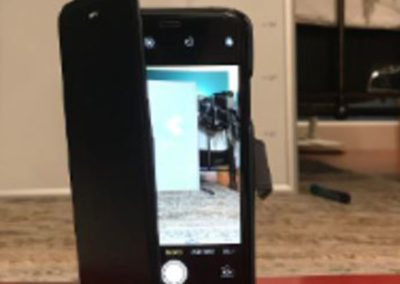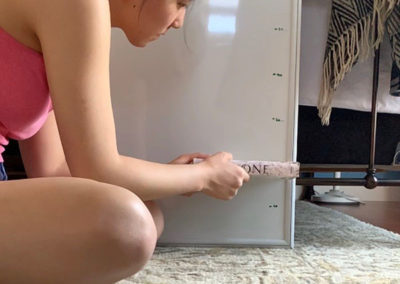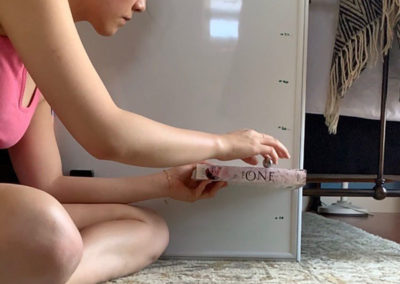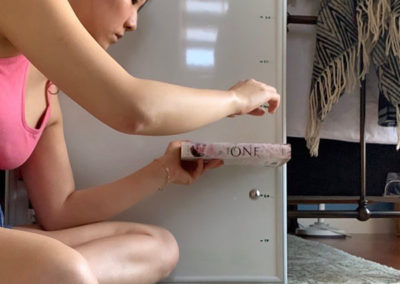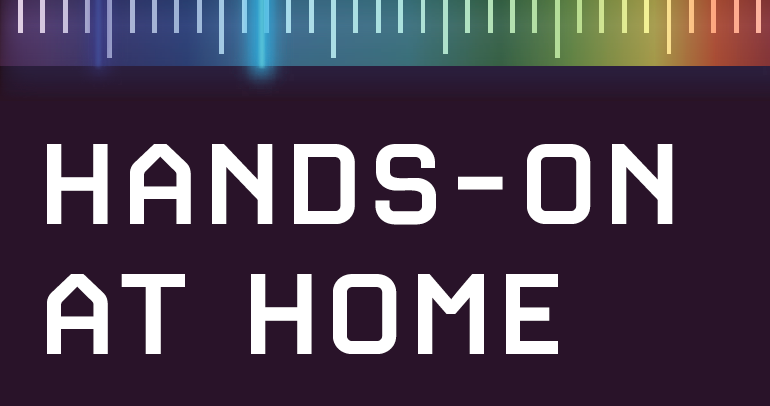
Physics Professor Adapts Introductory Lab Course for Remote Instruction
Every semester, roughly 200 students from across the university roll up their sleeves for experimental physics. The course serves not only as the introductory lab course for physics majors but fulfills a general education lab requirement for many students.
When Associate Teaching Professor David Anderson was tasked with moving the course online amid the coronavirus pandemic, his first thought was “how on earth are we going to do this?”
“Sometimes you get so involved in the minutiae of the course that you can’t see the wood for the trees,” Anderson said.
He had to step back and think about not only the learning objectives of the course but also how to adapt those objectives to these new and unprecedented circumstances. A large part of the course focuses on learning on how to analyze data and draw conclusions from experiments, something that was relatively easy to adjust to at-home instruction.
Anderson began by reworking some of the current experiments in the lab. In one experiment, students typically use a system of masses and springs as an example of a harmonic oscillator, a model that appears again and again in physics and in other sciences and can be seen in a number of things from the swaying of a suspension bridge in the wind to the growth of a colony of bacteria.
In the lab, students determine the resonance curve for the oscillator by applying certain driving frequencies and measuring the response of the system.
“One of the key objectives is to have students collect the data in an efficient and intelligent way,” Anderson stated, because it teaches students how to increase scientific value and minimize wasted time and energy. Students must analyze the data as they go along and choose different driving frequencies that will allow them to determine the resonance curve in as few steps as possible.
Anderson replicated this experiment by taking videos of the motion for 50 different driving frequencies. Students can sort through the enormous list by choosing one video, measuring the response and selecting additional frequencies intelligently.
“They can do the same thing online by choosing just the right videos to watch,” Anderson said.
“Rather than watching all 50 of them, which would take them all day, they can go through the right 20 videos and get the results they need efficiently.”
In another experiment, students would normally use a spectroscope to measure the light emitted from hydrogen. To adapt for online instruction, Anderson took pictures of what students would have seen through the device. While they don’t get to use the device themselves, they can use the photos to learn how to make the right measurements and analyze the data they collect.
“The course is really focused on the broader concept of the experiment itself.”
But Anderson admits that to truly meet the goals of the course, students do need some kind of hands-on work.
“With hands-on work, there’s no substitute for doing the experiment yourself — learning how to get a good sense of all of the potential issues and errors that can arise when you do an experiment and how you might go about controlling for those,” Anderson said. Experimental work also teaches students how to document their work by writing procedures, testing hypotheses and analyzing and communicating their results.
Thus, he created new experiments to capture the hands-on elements of the course where students could learn how to set up, conduct, analyze and report a scientifically rigorous experiment.
Running in the footsteps of Galileo, Anderson tasks students with analyzing the motion of objects falling over different distances to determine a precise value for acceleration due to gravity. Using their cell phone’s video camera, students can record the falling object in slow motion and go through the video’s time index to accurately measure its motion.
“Five or 10 years ago, we wouldn’t have been able to do this with any precision from home,” Anderson said.
Equipped with their cell phones, a piece of string and any object that will swing, students can also recreate a simple pendulum experiment. Students can predict the object’s motion and test that prediction by using their video camera to measure the pendulum’s period of oscillation.
With a little ingenuity and modern technology, “you can do high-precision experiments that meet all the goals of the course — the documentation, the rigorous analysis, the deciding if your prediction agrees with the theoretical model,” said Anderson.
On an interpersonal level, Anderson noted, another shortcoming of online instruction is being unable to connect with students face-to-face.
“The most effective teaching I do is not in lectures but in conversations in the lab,” Anderson said.
To recapture a sense of in-person instruction, he hosts an open Zoom meeting every day for two to three hours when the course is running.
“It might be an empty Zoom meeting most of the time,” he said, but he’ll be there if and when students need him to answer their questions and discuss their experiments in real time.
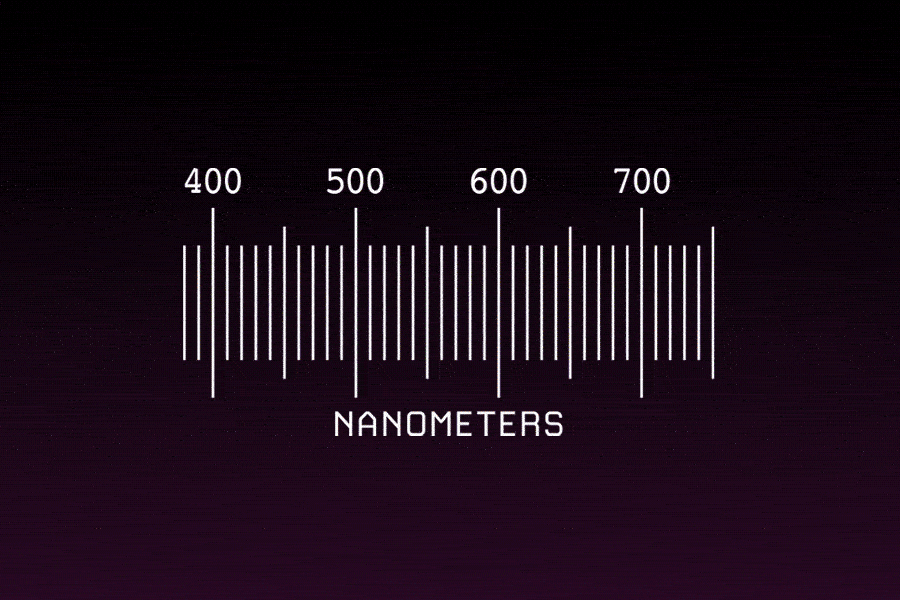
Normally, students in Experimental Physics use a spectroscope in the lab to measure the light emitted from hydrogen. To adapt for online instruction, Anderson took pictures of what students would have seen through the device, giving them another way to learn how to analyze data while being remote.
Whether in person or online, Anderson believes the beauty of the course is learning how to design and carry out a scientifically sound experiment and examine all the elements that come with that, such as understanding experimental uncertainty, statistical significance and data analysis.
“I think we were able to transition the course online because the focus of doing these experiments is not on the particular equipment, it’s not learning how to use particular measuring devices. The course is really focused on the broader concept of the experiment itself,” said Anderson.
When all is said and done, his goal is to equip students with the analytical and practical tools to become adept scientific researchers regardless of what the experiments are or what equipment is used.
“I hope students get the benefit of doing a hands-on experiment by learning how to not just analyze data but also communicate their results in reports, abstracts and posters,” Anderson said.
■ Emily Payne

